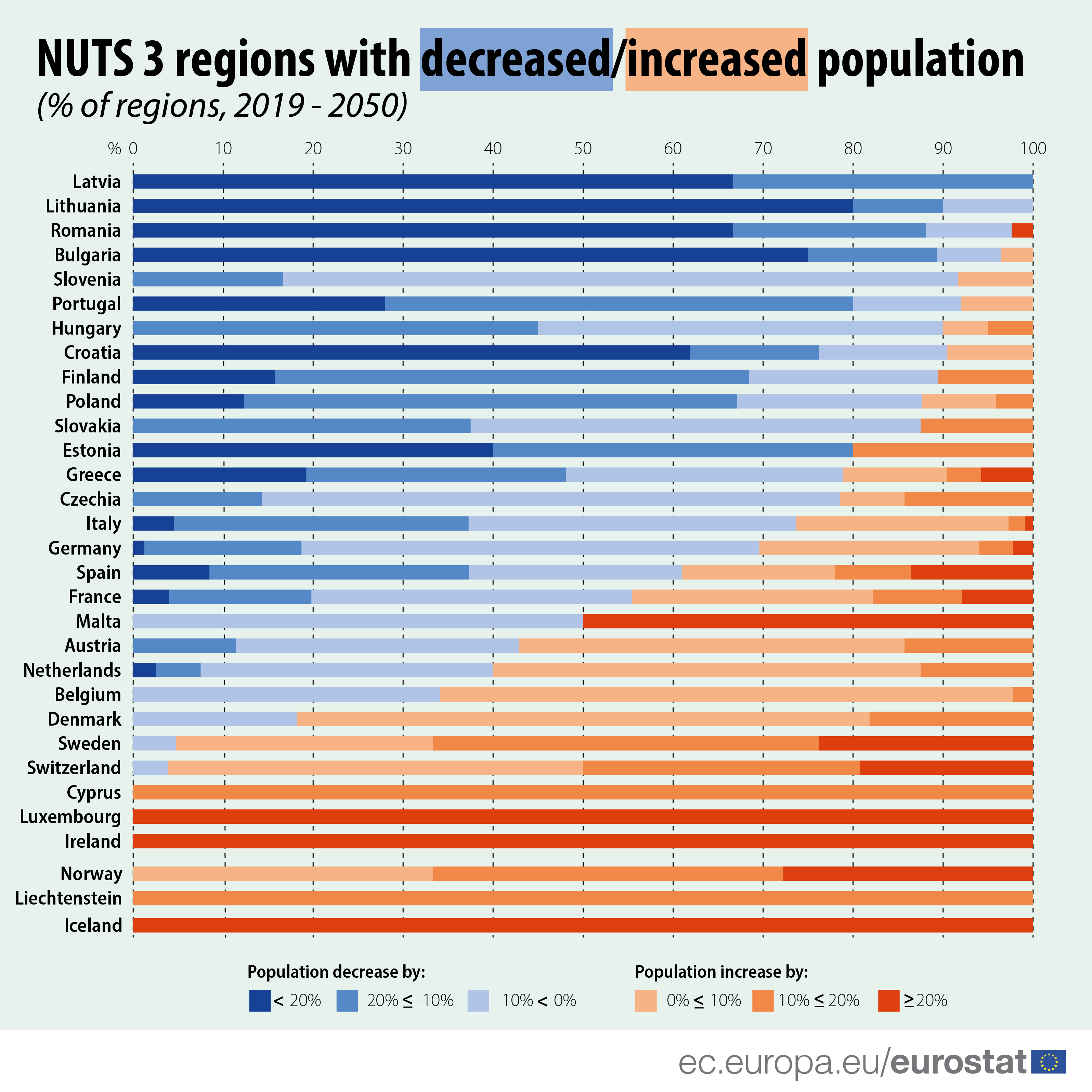Among the 1216 NUTS level 3 regions of the EU and EFTA countries, around two-thirds (802 regions) are projected to have a lower population in 2050 than in 2019, while about one-third (414 regions) are projected to have a higher population.
This information comes from the latest population projections of regional demographic patterns across 31 countries (the 27 EU Member States and the four EFTA countries). This article presents only a handful of findings from the more detailed Statistics Explained article.
There is a considerable variation in the projections across countries. In Latvia and Lithuania, all the 16 NUTS level 3 regions have a projected population in 2050 smaller than in 2019, most of them by at least 20%. Bulgaria, Estonia, Romania, Slovenia and Slovakia have only one region with a projected positive population change by 2050. Other countries with a large majority of regions with a projected decrease in population are Czechia, Greece, Croatia, Hungary, Poland, Portugal and Finland.
Source dataset: proj_19rp3
Almost 9 regions in 10 are projected to have a higher median age in 2050 than in 2019
The median age across these 31 countries is projected to increase by 4 years, from 45.1 years in 2019 to 49.1 years in 2050. Only in 131 of the 1216 regions (11% of the total) is the median age not projected to increase.
The fastest ageing populations are projected to be in regions located mainly in eastern Europe (Baltic countries, Poland, Slovakia, Romania and Bulgaria) and southern Europe (Italy, Spain and Portugal). For the 160 (13%) fastest-ageing regions an increase in the median age by at least 8 years between 2019 and 2050 is projected.
Younger populations are projected for only 10% of regions (119), 8 in 10 of these being in Germany, for which the median age would decrease by 4 years at most.
Source datasets: proj_19rdbi3 and proj_19ndbi
For more information
- The data presented in this article are based on the 2016 version of NUTS (the Nomenclature of Territorial Units for Statistics). It covers all 1169 regions classified as NUTS level 3 and the 47 Statistical Regions (SR) agreed between the European Commission and EFTA countries. EUROPOP2019 projections at subnational level were produced for NUTS level 3 regions, for all EU and EFTA countries, and are consistent with the population projections at national level, using population data on 1 January 2019 as a starting point. Eurostat’s population projections result from a set of assumptions on future developments for fertility, mortality and net migration. In other words, population projections are ‘what-if’ scenarios that track population developments under a set of assumptions. For this reason, population projections should not be considered as forecasts.
- Eurostat database on population projections
- Eurostat Statistics Explained articles on Population projections at regional level and Population projections in the EU
- Eurostat website section dedicated to population projections
- Eurostat metadata on population projections
To contact us, please visit our User Support page.
For press queries, please contact our Media Support.



